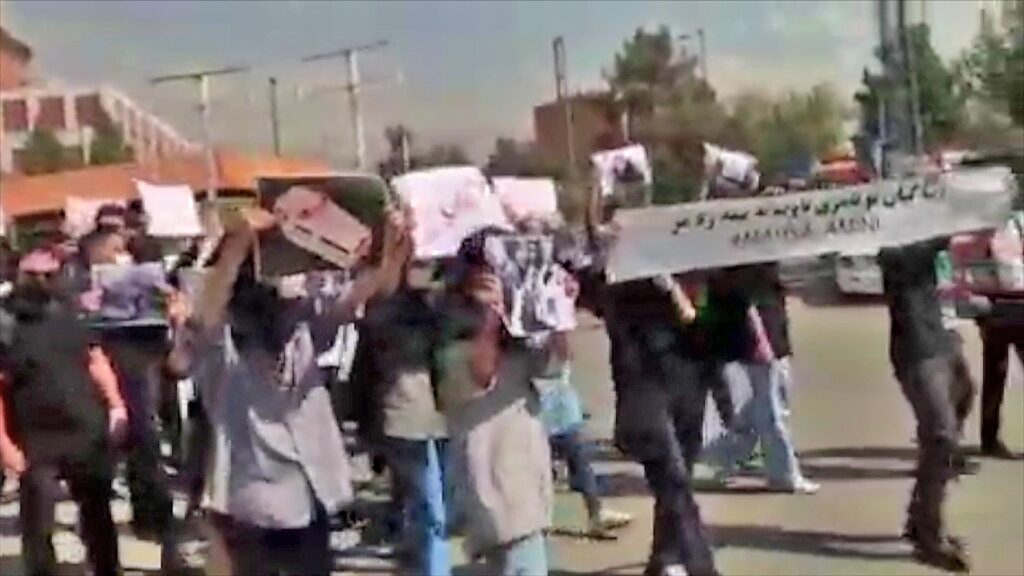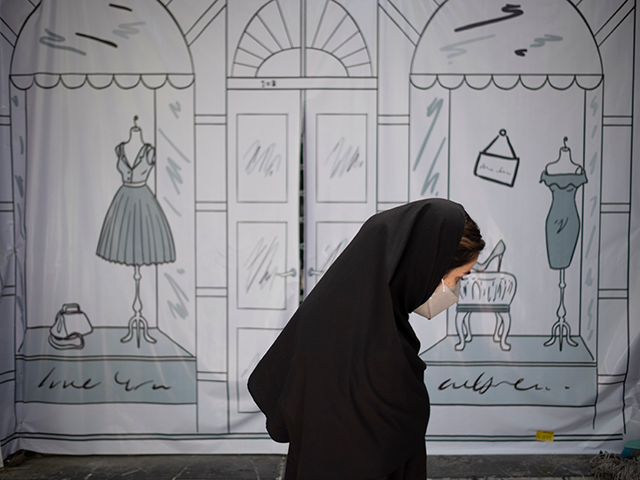Massive protests swept Iran over the weekend after the so-called “morality police” killed a 22-year-old woman named Mahsa Amini for violating strict requirements for women to keep their heads covered in public.
Amini, a young Kurdish woman from Iran’s western city of Saqez, was arrested by the Gasht-e Ershad or “Guidance Patrol” — more commonly known as the morality police or religious police — outside a train station in Tehran on Tuesday. Amini was in Tehran to visit her relatives.
The goon squad accused her of violating the laws requiring her head to be covered by a hijab headscarf, threw her into a van, and carted her off to a detention center. Eyewitnesses claim the morality police beat her while she was in the van. Within a few hours she was comatose and she died three days later.
Tehran officials denied the account of a beating, claimed she died of a “sudden heart failure” while waiting to be “educated” in religious law, and released security camera video of Amini seeming to collapse while talking to a female official at the detention center. Her family insisted she was “fit and had no health problems” and accused the authorities of doctoring the CCTV footage to conceal her injuries.
Amini’s death appears to have unleashed widespread public anger over hijab laws, and the brutal tactics employed by the Iranian theocracy in its energetic crackdown on offenders.
Protests began in Amini’s hometown of Saqez during her funeral on Saturday. Demonstrators marched on the office of the regional governor, chanting “Death to the Dictator,” meaning Supreme Leader Ayatollah Ali Khamenei.
Police responded with live rounds and rubber bullets, injuring dozens of people. Internet traffic was reportedly suppressed in cities where protests were held, a common tactic of the Iranian regime to prevent people from organizing.

Protesters at Allameh Tabataba’i University (ATU), an Iranian public university, following the controversial death of a young Kurdish woman while in custody by the “morality police.” (AFP)
Protests spread to other cities in Iranian Kurdistan during the weekend. Police used tear gas, water cannon, and gunshots against demonstrators in Sanandaj on Sunday, many of whom were women who threw away their hijabs to stand with Amini.
The protests escalated into strikes and shop closings in several western Iranian cities on Monday.
Another demonstration was held outside the hospital in Tehran where Amini died after collapsing in the detention center, and at Tehran University, where a hundred students carried banners declaring “Women, Life, Freedom.”
A hashtag named after #MahsaAmini became one of the biggest draws in the history of Persian-language Twitter by Monday, filled with denunciations of police brutality and accusations that officials are lying when they insist Amini died of natural causes.
International human rights groups demanded a far more thorough investigation of Amini’s death than anything Iran is likely to provide, while U.S. Special Envoy for Iran Robert Malley called her treatment “appalling” on Friday.
“Our thoughts are with her family. Iran must end its violence against women for exercising their fundamental rights. Those responsible for her death should be held accountable,” Malley said.
On Monday, the head of the “moral security police of Greater Tehran,” Col. Ahmed Mirzaei, was reportedly suspended from his position.
Also on Monday, a London-based media outlet called Iran International published what it claimed were CT scans of Amini’s head, procured from Iranian government servers by activist hackers. The scans “vividly show a skull fracture on the right side of her head caused by a severe trauma to the skull, which corroborate earlier accounts by her family and doctors about her being hit several times on the head.”
“Images of her chest show bilateral diffuse alveolar hemorrhage and damage due to aspiration pneumonia, secretion retention and superimposed infection. Doctors say the results are compatible with acute respiratory distress syndrome due to brain trauma,” Iran International noted.

COMMENTS
Please let us know if you're having issues with commenting.